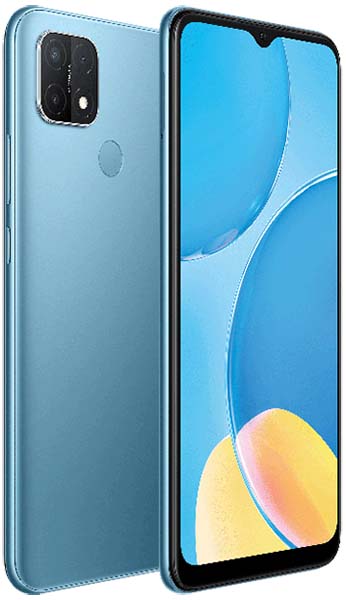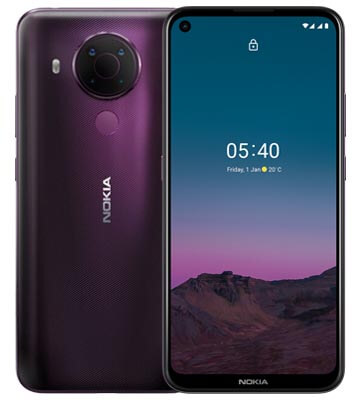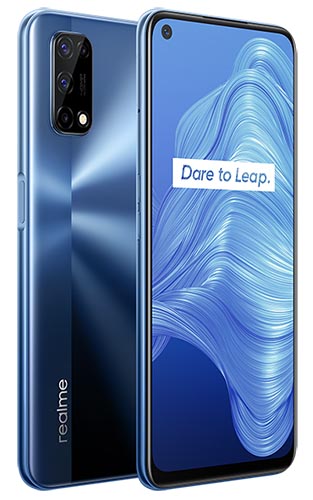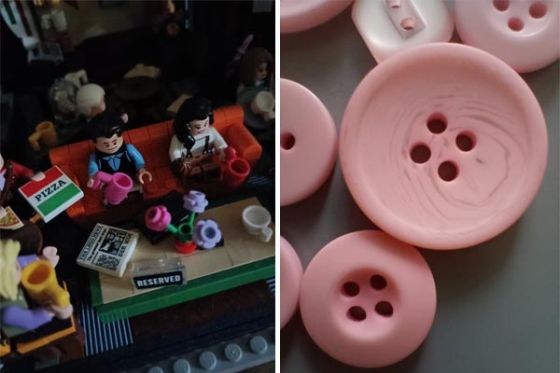There’s no doubt that cheap mobile phones are becoming more popular each year. When smartphone technology was still in its infancy, that tech came with big price tags, and if you wanted a phone with great performance and extra features you had to spend upwards of $1,000.
Now, smartphone technology is miles ahead where it was just a few years ago, and the good news is that a great performing mobile phone with all those extra features no longer has to cost over $1,000. In fact, there are plenty of excellent phones out there for $500 or less, making the latest and greatest tech more affordable than ever.
If you’ve made the decision to save by choosing a cheap phone and your budget is a little more flexible, you might be wondering if there are any major differences between, say, a $200 phone and a $400 phone. In this review, we’ll take a look at three different devices at different price points to give you an overall idea on what the differences typically are between the price ranges. By getting a better idea of what’s offered at each price point, you may find it’s worth paying a bit more for extra features, or that you’re happy to save with a more basic device.
Keep in mind that in this comparison we’ll be looking at phones from different manufacturers. Some brands might offer more or less features at these different price points, so while this serves as a general guide on what you can get for your money, it’s worth taking a look at devices from a range of manufacturers in order to understand what features are available at different price points.
Are cheap phones any good?
Before we compare devices, you might be wondering whether cheap phones are actually any good. While everyone likes to save some money, it’s understandable that with a purchase as important as a mobile phone, you want to make sure you’re not spending cash on something that won’t last long term.
With most tech, the understanding is that cheaper or budget devices tend to not last as long or might experience more issues. However, phone technology is now at a point where the cheap devices on offer are often more powerful than premium devices from several years ago. Many smartphone manufacturers that do produce cheap phones put a lot of effort into devices at those lower price points. Some brands even make budget-friendly devices a priority in their phone line-ups, ensuring they don’t skimp on the features just because of the price tag. On that note, let’s take a look at three different phones at three different price points, to give you an idea of what kind of phones are available for your money.
$200 mobile phone — OPPO A15

Starting off at the cheapest price point in this review, for $239 AUD RRP, the OPPO A15 does pack in many of the basics you’d expect in a smartphone. While there are some devices out there that are cheaper than the A15, this is one of OPPO’s most affordable phones, as the A series is OPPO’s more budget-friendly range.
For this price point, you can pick up a surprising amount of features. The A15 includes a triple-rear camera setup (13MP + 2MP macro + 2MP depth lens) and 5MP front-facing camera, both fingerprint and facial unlocking, a 6.5 inch HD+ LCD display, 4,230mAh battery and Octa-core processor. Perhaps one of the most noticeable differences at this price point is in the RAM and storage — with 3GB of RAM and 32GB of internal storage included, although there is the optional expandable storage of up to 256GB.
This phone does include some great features on paper, however the real life performance is a little hit and miss with some functions. While the lens setup is impressive for the price point, the performance of these lenses and the camera app isn’t as smooth as you would get for a more expensive device. Performance is also generally a little slower to process, and you might come across some occasional glitches.

However, small issues like occasionally slow performance, slower charging, and quality of features like built-in speakers and cameras is very typical at this price point. You’ll never get the absolute ‘best of the best’ features in a smartphone for around $200. What you can expect is a phone that will do what you need it to and function rather smoothly. You won’t have a bad experience, and for a light to average phone user, it will do what you need it to. If you’re upgrading from an older device, you might even experience an improved performance.
If you want more details on the hands-on performance of this device, you can check out our review of the OPPO A15.
$300 mobile phone — Nokia 5.4

Going up another $100 can make a bit of a difference to your experience. The Nokia 5.4 is priced at $329 AUD RRP, and while it does have many of the same basic features that the cheaper OPPO does, there are a few more improvements which justify the price increase.
The Nokia 5.4 includes a 6.39 inch HD+ display, 4,000mAh battery, both fingerprint and facial unlocking, and a Qualcomm Snapdragon 662 processor. The cameras also get a bit more of an upgrade, with a quad-rear camera setup (48MP main + 2MP depth + 5MP ultrawide + 2MP macro) plus 16MP front-facing camera. You will get a RAM and storage upgrade too, with 4GB of RAM and 128GB internal storage (with up to 512GB of expandable Micro SD storage).
This price point does include many of those basic features found on the sub-$200 phone, but with a few upgrades here and there. Of course, the features and specs will differ between manufacturers, but you can get a little bit more for your device if you choose to spend an extra $100. Nokia also includes a few more effects for photos and videos at this price point, which is great if you tend to like taking photos and videos every now and then, but don’t want to spend too much on your device.

Some of the performance issues with the cheaper phone were also present at this price point. Functions like the camera app and general performance weren’t as smooth and seamless as you would experience with a more expensive device. Likewise, the screens at these cheaper prices might not be as vibrant, as they don’t include the best screen technology available.
Overall though, you will have a solid performance and for what you pay, the quality is great. There is a bit of an upgrade in specs and features when you do jump up to that $300 price point, so if you’re looking for that budget-friendly price but want a little more than the basics, you might find devices at the $300 mark to have more of what you want. For more information, you can read our review of the Nokia 5.4.
$400 mobile phone — Realme 7 5G

This is perhaps where you might see the biggest jump in quality, as devices around the $400-$500 mark tend to offer a bit more value, and these devices sit more in that mid-range price point rather than on the cheaper end of the spectrum. The Realme 7 5G is priced at $499 AUD RRP, and you might notice the inclusion of 5G connectivity for this price. While 5G is typically included on the more premium phones, some manufacturers including Realme and Motorola are now offering 5G compatibility at this more budget-friendly price point.
The Realme 7 5G includes a 6.5 inch FHD+ display, Dimensity 800U Octa-core processor, 5,000mAh battery, quad-rear camera setup (8MP high-resolution + 8MP ultra-wide + 2MP macro + 2MP portrait) plus 16MP front-facing camera, and of course, 5G connectivity. Another improvement is the 8GB of RAM, plus 128GB of internal storage and up to 256GB of expandable storage (slightly less than the cheaper Nokia). Plus, you’ll get 30W Dart charge included, so you can usually find devices with faster charging when jumping up to this price point.
You can definitely notice a difference between the quality of the device when compared to handsets in the sub-$400 range. Typically the screen is more vibrant, you might get some better camera lenses, the battery is bigger, and of course the processor and RAM is improved, giving you a much smoother performance than on cheaper phones. You might also see those ‘nice to have’ extras like fast charging — and in the case of this Realme device, the addition of 5G compatibility — included at this price.

There are definitely less noticeable performance issues, and a phone at this price will typically operate smoother and with less glitches. The cameras are also much improved, and you’ll most likely notice this in the features such as Night Mode, which generate much clearer images in darkness compared to the often dark and blurry Night Mode shots on cheaper phones.
A device at this price point might start to feel more like a premium purchase when compared to the phones that are $100 to $200 cheaper. Depending on your budget, if you’d like some premium features in addition to the basics, looking at a phone around the $400-$500 price mark will most likely suit what you’re after. For more information, you can read our review of the Realme 7 5G.
Which is the best cheap phone?
Of course there is no such thing as the ‘best phone’ — what will make a good phone depends entirely on how that device works for you. When looking at buying a cheap phone, finding a device that sits within your budget is going to be a top priority. But once you’ve made a choice on how much you’re willing to spend on a new phone, you’ll then want to look into which devices are available at that price point.
The phone manufacturer might also be important for you. If you’re used to devices from brands like Samsung or OPPO, you might look to their cheaper ranges to see if there is a device that fits your budget. If you’re less dedicated to a certain brand, you have more freedom to look into which device offers more for your money at your price point. While companies like Realme and Vivo might be still relatively unknown compared to the bigger names, both manufacturers have ties to OPPO, and are known for their focus on producing quality devices at cheaper price points. You might be surprised by just how much value you can get for your money by going with one of those more budget-friendly challenger brands.
Brands like Nokia and Motorola were once the biggest names in mobile phones, although they were somewhat left behind the smartphone race, which is primarily run between the likes of Apple and Samsung. However, both Nokia and Motorola have since made big leaps in the world of smartphones, and now produce some great quality devices (and often at cheaper prices than the big names). If it’s been 20-odd years since you’ve used a Nokia or Motorola, now might be the time to see what they have to offer when it comes to cheap smartphones.
The good news is, if you’re in the market for a cheap phone, there are more choices than ever. While you might be hesitant and expect that maybe a cheap phone is not going to provide you with the best experience, more often than not, you’ll find many of these devices offer solid day-to-day performance, just with more basic specs and less bells and whistles.
Compare SIM-only phone plans
Most cheap phones are only available to buy outright from retailers, so you’ll need to choose a SIM-only phone plan to go with your device. Whether you want a basic and super cheap phone plan, or you’re looking for a phone plan with lots of data, whether that’s prepaid or postpaid — there are plenty of options to choose from.
Here is a selection of postpaid plans from Canstar Blue’s database with a minimum of 20GB of data, listed in order of standard cost, lowest to highest, then by data allowance, largest to smallest. Try using our mobile phone plan comparison tool to see a wide range of plans from other providers. This table includes products with links to referral partners.
Here is a selection of prepaid plans from Canstar Blue’s database with a minimum of 10GB of data each month, listed in order of standard cost, lowest to highest, then by data allowance, largest to smallest. If you want to compare a larger range of offers from other providers, use our phone plan comparison tool. This table includes products with links to referral partners.


Share this article